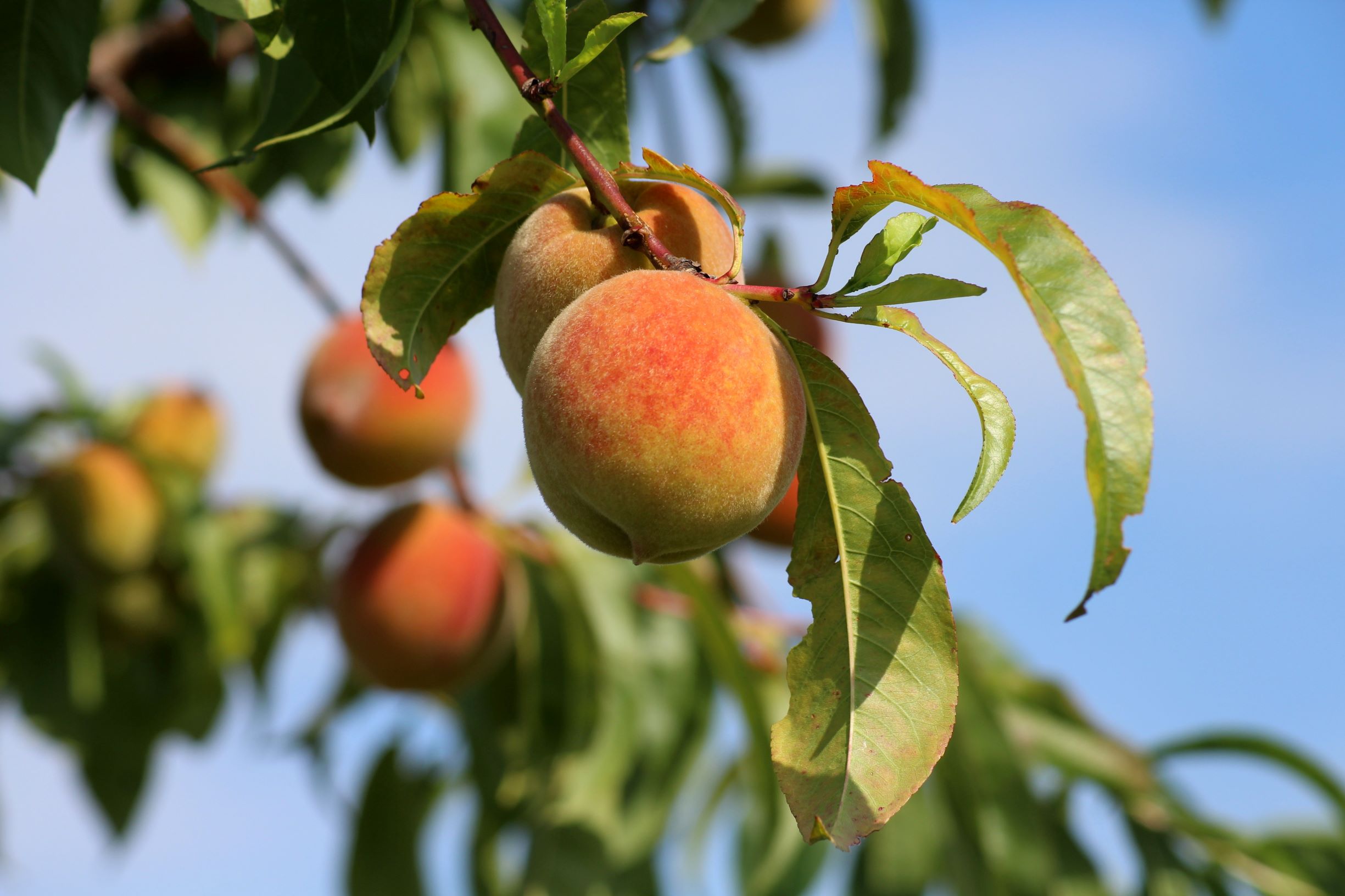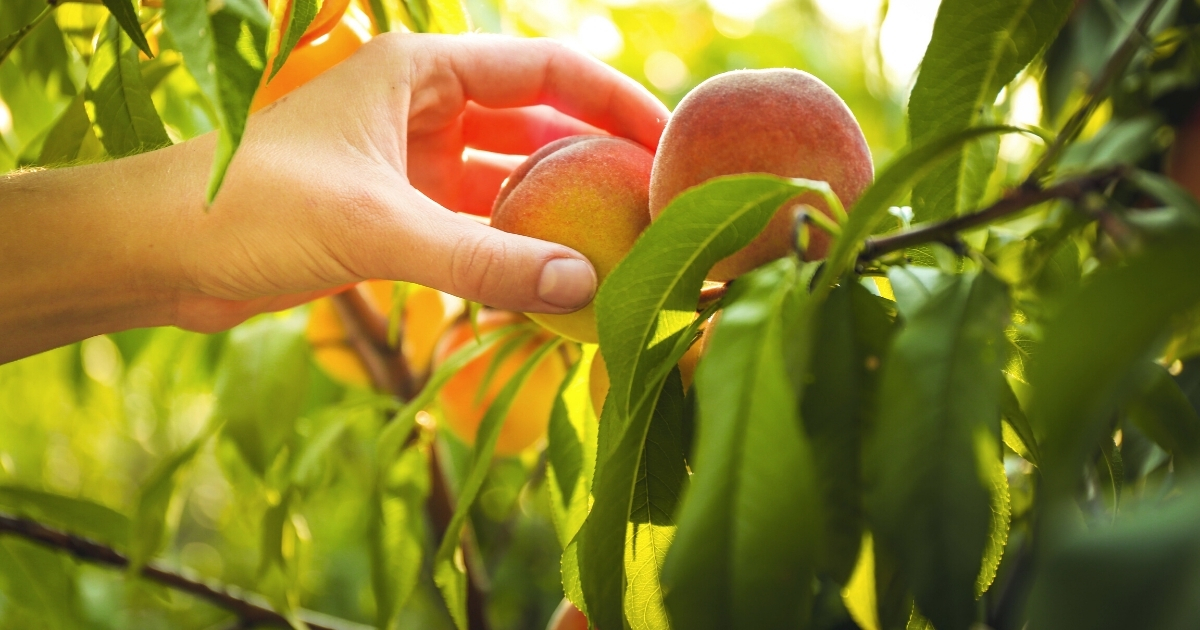Peach trees can transform a garden with their spring blossoms and juicy summer fruits. For those residing in Britain, considering the unique climate and soil conditions is vital when purchasing peach trees. This article provides essential guidance from tree care specialists on selecting, planting, and initial care for peach trees, tailored specifically for British gardeners.
Peach Tree Varieties
According to this peach tree guide at https://www.fruit-trees.com/buy-peach-nectarine-fan-trees-online.html it’s essential to understand the different varieties available and how they perform in the UK’s climates, before you buy a peach tree. Peach trees are not native to Britain, but many varieties have been successfully grown across the country. Popular varieties include ‘Avalon Pride’, which is known for its disease resistance, and ‘Redhaven’, celebrated for its sweet and succulent fruit. Each variety has specific growth needs, fruiting times, and resistance to various climatic challenges such as frost and diseases.
Climate Considerations
Britain’s climate varies significantly from region to region. The south enjoys a warmer and generally milder climate, making it ideal for growing most peach varieties. In contrast, northern and central regions can be more challenging due to cooler temperatures and potential late frosts. Choosing a tree that can thrive in your local conditions is crucial. For colder areas, look for hardier varieties or consider growing your peach tree against a south-facing wall or in a greenhouse to provide extra warmth and protection from harsh conditions.
Soil Requirements
Peach trees thrive in well-drained, fertile soil with a pH between 6.0 and 7.0. Before planting, it’s advisable to test the soil pH and adjust it if necessary using lime (to decrease acidity) or sulfur (to increase acidity). Proper soil preparation is critical to ensure your peach tree gets the best start. To enhance soil fertility and structure, add a lot of organic matter, such as compost or well-rotted manure.
Choosing the Right Tree
When buying a peach tree, opt for a healthy specimen from a reputable nursery or tree care specialist. Here are key factors to consider when making your selection:
Tree Age and Size
Peach trees are often sold as either bare-root, container-grown, or balled-and-burlapped. Younger trees, typically one to two years old, are preferable as they tend to adapt better to transplanting and can be trained more easily according to your garden’s conditions. The size of the tree will also influence its initial care and planting requirements.
Root Health
Check the tree’s roots before purchase; they should be firm, not mushy or dried out. For container-grown trees, roots should not be circling densely as this indicates they are pot-bound, which can lead to stunted growth. Bare-root trees should have a well-developed root system that is moist and robust.
Canopy Structure
Examine the tree’s canopy for good branching structure. A well-pruned tree will have evenly spaced branches and a balanced shape, which encourages healthy growth and fruit production. Avoid trees with damaged or broken limbs, which can be entry points for disease.
Planting Your Peach Tree
The best time to plant peach trees in Britain is during the dormant season, from late autumn to early spring. This timing gives the tree a chance to establish roots in the cool, moist soil before the growing season begins. Here are some steps to ensure successful planting:
Location: Choose a sunny, sheltered spot where your tree is protected from strong winds. Ensure the site has good air circulation to minimize the risk of fungal diseases.
Planting Hole: Dig a hole that is twice as wide as the root ball but no deeper. Loosening the soil around the hole helps the roots expand and grow.
Positioning the Tree: Place the tree in the center of the hole, ensuring that the graft union (the point where the rootstock meets the scion) is above soil level. Backfill the hole with a mixture of native soil and compost, firming gently to eliminate air pockets.
Watering and Mulching: Water the tree thoroughly after planting to settle the soil around the roots. Apply a layer of mulch around the base to retain moisture and suppress weeds, keeping it away from the trunk to prevent rot.
Initial Care for Your Peach Tree
After planting, initial care is crucial for your peach tree to thrive. Regular watering, especially during dry spells, is necessary in the first few years. Fertilization should be approached cautiously; a balanced, slow-release fertilizer can be applied in the first spring after planting, but over-fertilization can lead to poor fruit quality and increased susceptibility to diseases.
Pruning is also essential in the early years to shape the tree and promote a strong, productive framework. In Britain, pruning should be done in the late winter to early spring, avoiding periods when frost is likely. The goal is to create an open center that allows light to penetrate and air to circulate freely, reducing the risk of disease and encouraging even fruit ripening.
By selecting the right variety, preparing the site properly, and following through with careful planting and initial care, gardeners can successfully grow peach trees even in the less-than-ideal British climate. The rewards of home-grown peaches are well worth the effort, providing delicious fruits for eating fresh, baking, or preserving.
Regular Maintenance Practices
Watering
Even after establishment, peach trees require consistent moisture, especially during fruit development and in dry periods. It’s important not to overwater, as peach trees are susceptible to root rot. A good rule of thumb is to water deeply once a week during dry weather. Using a drip irrigation system or a soaker hose can provide slow, steady watering that encourages deep root growth and reduces moisture on foliage, which can lead to disease.
Fertilizing
Peach trees benefit from annual fertilization to support their vigorous growth and fruit production. Apply a balanced fertilizer early in the spring as new growth appears and again in the early summer to support fruit development. Avoid applying fertilizer late in the season as it can promote new growth that may not harden off before winter, making the tree more vulnerable to cold damage.
Pruning
Ongoing pruning is critical to maintain the health and productivity of your peach tree. Annual pruning should be aimed at removing dead or diseased wood, thinning out crowded branches to improve air circulation, and cutting back branches to encourage the growth of new fruiting wood. The best time for this is late winter or early spring before new growth starts, but after the worst of the winter frosts.

Pest and Disease Management
Peach trees, like all fruit trees, can be susceptible to a range of pests and diseases. Common issues in Britain include peach leaf curl, red spider mite, and aphids.
Peach Leaf Curl
Peach leaf curl is caused by a fungus that distorts leaves and reduces the tree’s overall vigor. To prevent this disease, apply a fungicide spray before bud break in early spring and ensure good drainage and air circulation around your trees.
Red Spider Mite and Aphids
These pests can cause significant damage by sucking sap from the leaves, leading to leaf curling and drop. Regular monitoring and maintaining a healthy tree are the best defenses. In case of severe infestations, using an appropriate insecticide or introducing natural predators like ladybirds can be effective.
Harvesting and Storage
Harvesting peaches at the right time is crucial for optimum flavour. Peaches are ready to harvest when they detach easily from the tree with a gentle twist and when the fruit’s background color changes from green to yellow or cream. Depending on the variety and local climate conditions, this usually occurs from late July through September in Britain.
Once harvested, peaches can be eaten fresh, stored in the refrigerator for a few days, or processed for longer storage. Freezing, canning, and making preserves are excellent ways to extend the enjoyment of your peaches.
Supporting Tree Health
To support the long-term health of your peach tree:
- Ensure competitive plants, including grass, are cleared around the base of the tree.
- Apply mulch annually to conserve moisture and suppress weeds.
- Check for and repair any mechanical injuries to the trunk or limbs, as these can become entry points for disease.
By adhering to these guidelines and regularly monitoring the tree for signs of stress or disease, you can enjoy the benefits of fresh, home-grown peaches for many years. Growing peach trees in Britain can be a rewarding endeavor that enhances your garden’s beauty and yields delicious fruits for your table. With careful selection, proper planting, and diligent care, your peach trees will flourish in the British climate, providing a lush, fragrant addition to your landscape.


